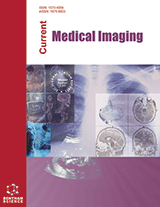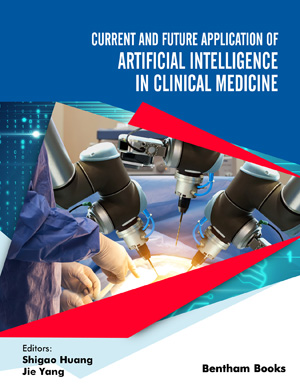
Abstract
Background: Immunoglobulin G4 (Ig G4)-related disease is rare; however, it is a fibroinflammatory disease that has been studied a lot so far. Although the expression pattern varies depending on the organ affected, it usually manifests as organ hypertrophy and organ dysfunction.
Case Presentation: A 46-year-old man was referred to our otorhinolaryngology department for left submandibular swelling and tenderness that occurred 2 weeks ago. He was treated with antibiotics (augmentin 625mg, per oral) for 2 weeks, but his symptoms did not improve, and his white blood cell (WBC) count was 10,500 /μL (normal 3,800−10,000 /μL).
Conclusion: A mass-like lesion of the submandibular space has been concluded and the laboratory findings have been satisfactory (IgG4 level); IgG4-related disease, which is rare, but recently often reported, can be included in the differential diagnosis.
Keywords: Immunoglobulin G4, Fibroinflammatory, Organ hypertrophy, Plasma cells, Disease, Tumefactive lesions.
Current Medical Imaging
Title:Immunoglobulin G4 (IgG4)-related Lymphadenopathy in Submandibular Space Mimicking Submandibular Malignant Tumor: A Case Report
Volume: 20
Author(s): Go Eun Yang*
Affiliation:
- Department of Radiology, Kangwon National University Hospital, 200-702, ChunCheon, South Korea
Keywords: Immunoglobulin G4, Fibroinflammatory, Organ hypertrophy, Plasma cells, Disease, Tumefactive lesions.
Abstract:
Background: Immunoglobulin G4 (Ig G4)-related disease is rare; however, it is a fibroinflammatory disease that has been studied a lot so far. Although the expression pattern varies depending on the organ affected, it usually manifests as organ hypertrophy and organ dysfunction.
Case Presentation: A 46-year-old man was referred to our otorhinolaryngology department for left submandibular swelling and tenderness that occurred 2 weeks ago. He was treated with antibiotics (augmentin 625mg, per oral) for 2 weeks, but his symptoms did not improve, and his white blood cell (WBC) count was 10,500 /μL (normal 3,800−10,000 /μL).
Conclusion: A mass-like lesion of the submandibular space has been concluded and the laboratory findings have been satisfactory (IgG4 level); IgG4-related disease, which is rare, but recently often reported, can be included in the differential diagnosis.
Export Options
About this article
Cite this article as:
Yang Go Eun*, Immunoglobulin G4 (IgG4)-related Lymphadenopathy in Submandibular Space Mimicking Submandibular Malignant Tumor: A Case Report, Current Medical Imaging 2024; 20 : e15734056265681 . https://dx.doi.org/10.2174/0115734056265681231126192308
| DOI https://dx.doi.org/10.2174/0115734056265681231126192308 |
Print ISSN 1573-4056 |
| Publisher Name Bentham Science Publisher |
Online ISSN 1875-6603 |
Call for Papers in Thematic Issues
Advancements and Applications of Photon Counting CT: Transforming Imaging Precision and Quantification
Photon Counting Computed Tomography (CT) represents a transformative advancement in medical imaging technology, offering unprecedented levels of precision and diagnostic capability. This special issue will explore the latest innovations and applications of photon counting CT, highlighting its advantages over traditional energy-integrating detectors. The scope includes an in-depth examination of its ...read more
Advancements in Deep Learning based Medical Image and Signal Processing for Healthcare Applications
The accurate predication from medical data (signals and images) analytics will be achieved through the use of cutting-edge AI tools for tailoring medical treatment to each patient. When the agents are done analysing the user's health data, the user can consult with the agents to receive advice and the most ...read more
AI-Driven Diagnostics in Radiology and Medical Imaging
Medical imaging data, such as X-rays, MRIs, ultrasounds, CT scans, and DXAs, can be analysed by AI algorithms to help healthcare professionals identify and diagnose diseases more rapidly and accurately. Among the most cutting-edge applications of artificial intelligence (AI) in healthcare are imaging-related applications like cancer detection. AI could revolutionise ...read more
Applying medical image processing techniques for early cancer detection in mammograms
Breast cancer survival and successful treatment are significantly boosted by early identification. Breast cancer screening is most commonly accomplished with mammography. The radiologist's experience and the image quality, among several other factors, might affect how well a mammogram is interpreted. Enhancing mammography analysis and increasing cancer early detection are made ...read more
Related Books
 14
14
- Author Guidelines
- Graphical Abstracts
- Fabricating and Stating False Information
- Research Misconduct
- Post Publication Discussions and Corrections
- Publishing Ethics and Rectitude
- Increase Visibility of Your Article
- Archiving Policies
- Peer Review Workflow
- Order Your Article Before Print
- Promote Your Article
- Manuscript Transfer Facility
- Editorial Policies
- Allegations from Whistleblowers
Related Articles
-
Reactive Oxygen Species: Physiological Roles in the Regulation of Vascular Cells
Current Molecular Medicine Clients and Oncogenic Roles of Molecular Chaperone gp96/grp94
Current Topics in Medicinal Chemistry The Effect of a Common Antibiotics Doxycycline on Non-Healing Chronic Wound
Current Pharmaceutical Biotechnology Therapeutic Angiogenesis: Recent and Future Prospects of Gene Therapy in Peripheral Artery Disease
Current Gene Therapy Patients’ Induced Pluripotent Stem Cells to Model Drug Induced Adverse Events: A Role in Predicting Thiopurine Induced Pancreatitis?
Current Drug Metabolism Cross Currents in Protein Misfolding Disorders: Interactions and Therapy
CNS & Neurological Disorders - Drug Targets Inflammation in Coronary Artery Disease and Acute Myocardial Infarction - is the Stage Set for Novel Therapies?
Current Pharmaceutical Design Can Antidiabetic Drugs Improve Male Reproductive (Dys)Function Associated with Diabetes?
Current Medicinal Chemistry Cannabinoid Receptor Type 2 Activation in Atherosclerosis and Acute Cardiovascular Diseases
Current Medicinal Chemistry Cardioprotective Activities of some Indian Spices: An Insight into Pharmacology and Phytochemical Investigation
Current Traditional Medicine Dual Effects of Antioxidants in Neurodegeneration: Direct Neuroprotection against Oxidative Stress and Indirect Protection via Suppression of Gliamediated Inflammation
Current Pharmaceutical Design Metabolic Basis of Sporadic Alzeimer’s Disease. Role of Hormones Related to Energy Metabolism
Current Pharmaceutical Design Treatment and Response to Statins: Gender-related Differences
Current Medicinal Chemistry Migraine and Coronary Artery Disease: An Open Study on the Genetic Polymorphism of the 5, 10 Methylenetetrahydrofolate (MTHFR) and Angiotensin I-Converting Enzyme (ACE) Genes
Central Nervous System Agents in Medicinal Chemistry Bilirubin Chemistry and Metabolism; Harmful and Protective Aspects
Current Pharmaceutical Design Anti-Inflammatory Approaches that Target the Chemokine Network
Recent Patents on Inflammation & Allergy Drug Discovery Endothelial Therapy of Atherosclerosis and its Risk Factors
Current Vascular Pharmacology Microvascular Function/Dysfunction Downstream a Coronary Stenosis
Current Pharmaceutical Design Repurposing of Anti-Diabetic Agents for the Treatment of Cognitive Impairment and Mood Disorders
Current Molecular Medicine The Role of Mast Cells in the Structural Alterations of the Airways as a Potential Mechanism in the Pathogenesis of Severe Asthma
Current Pharmaceutical Design












